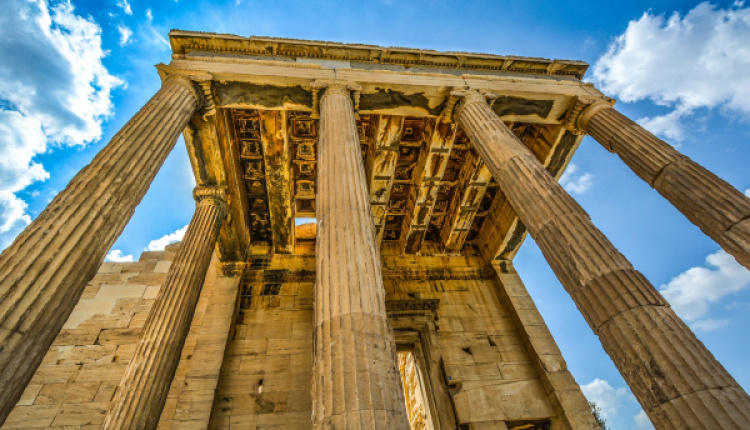7 Mysteries Of Ancient Greece That Remain Unexplained
- by XpatAthens
- Tuesday, 01 November 2022

Ancient Greece was the birthplace of Western civilization and democracy. The information we have about the life of the ancient Greeks, their celebrations, and their religious beliefs has been preserved in a series of ancient texts, which have survived, and today are part of the world's cultural heritage.
Despite our extensive knowledge about life in Ancient Greece, there are some mysteries that remain unexplained.
The Eleusinian Mysteries
The Eleusinian Mysteries were the most sacred religious rites of ancient Greece, practiced for over a thousand years. Yet, we do not have much information about the rituals during these initiations. The people who participated in the Eleusinian Mysteries could not reveal what was going on during them. Several scientists claim, in fact, that anyone who spoke about the rituals was in danger of losing his life.
The First (?) Actor
Many claim that the first actor in history was none other than Thespis. More specifically, Thespis is believed to have been the first to combine choral singing with recitations and was the first to exchange words with the chorus leader (coryphaeus). However, many argue that this particular person was a myth, a symbol of the beginning of acting in the Greek theatrical tradition.
The Architecture of the Parthenon
The Parthenon is considered one of the most emblematic temples of the ancient world. And books upon books may have been written about its construction, but there are some aspects of it that still remain unknown. There are questions to this day about the "figures" depicted on the frieze, as well as the two inner chambers that existed within the temple, since no one has determined with absolute certainty what they were used for.
The Works of Pythagoras
We all know him for the famous Pythagorean Theorem. However, the life and work of the mathematician who created it are obscure. This is partly due to the fact that the philosophical school he founded operated in extreme secrecy. Also, many point out that his famous theory was first developed in ancient Babylon.
The Destruction of the Statue of Zeus
It is one of the seven wonders of the ancient world. Of these, only the Great Pyramid of Giza in Egypt survives today. The statue of Zeus was created by Pheidias, and its destruction remains a great mystery. Legend has it that it was destroyed by fire, with the statue reduced to ashes. It has been argued, however, that the huge statue was removed from the temple and moved to Constantinople, where it was later destroyed.
The Mythical Labyrinth of the Minotaur
The Minotaur was a mythical creature with the body of a man and the head of a bull, who was kept imprisoned in a labyrinth by the king of Crete, Minos. The labyrinth is believed to have existed in the palace of the ancient city of Knossos. The excavations that have been conducted in the area, however, have not revealed any building structures that match a maze. Therefore, the debate surrounding the famous labyrinth continues to this day.
The Works of Homer
Homer is considered the greatest poet of all time. However, he remains a mysterious figure of Ancient Greece in many ways since several analysts argue that he was not the real—or, at least not the only—creator of the Iliad and the Odyssey. In any case, the information we have about him is much less than we would like. As for the two epic poems? It would be more proper to view Homer as the culmination of a tradition, the top of a centuries-old poetic pyramid, instead of the sole poet of these two works.
Originally published in Greek on: oneman.gr
Originally published in Greek on: oneman.gr
Translated by: Codico Lab


